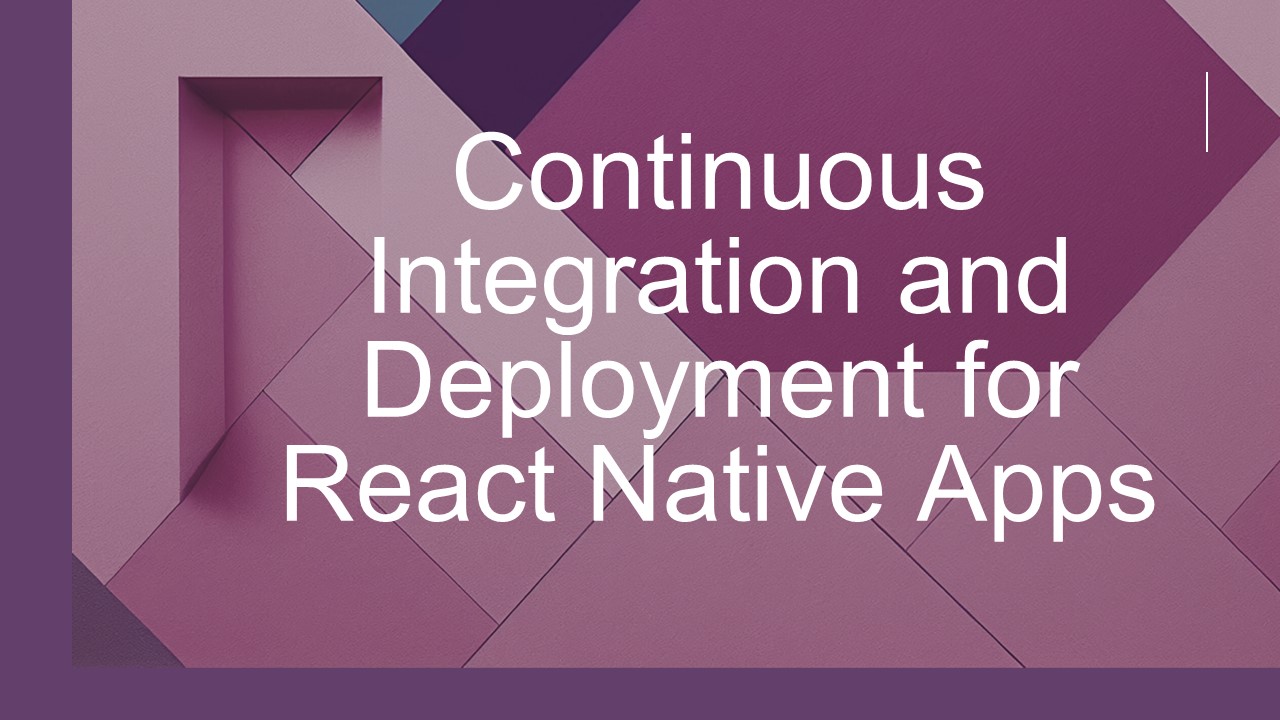Continuous Integration and Deployment for React Native Apps - PowerPoint PPT Presentation
Title:
Continuous Integration and Deployment for React Native Apps
Description:
"Embark on a journey of innovation with React Native's Continuous Integration and Deployment. Witness the magic of seamless code integration and let your apps dance to the rhythm of progress. – PowerPoint PPT presentation
Number of Views:2
Title: Continuous Integration and Deployment for React Native Apps
1
Continuous Integration and Deployment for React
Native Apps
2
Today's agenda
- Introduction
- Importance of CI/CD in the software development
lifecycle - Why CI/CD for React Native?
- CI/CD Workflow for React Native
- Setting Up CI/CD for React Native
- Automated Builds in CI
- Automated Testing in CI
- Continuous Deployment to Staging
- Deployment to Production
- Challenges and Solutions
- Future Trends in CI/CD for React Native
- Conclusion
3
Introduction
- Continuous Integration (CI) CI automates code
integration into a shared repository, detecting
and addressing integration issues early through
automated build and test processes. - Continuous Deployment (CD) CD extends CI by
automating the deployment of successfully tested
code changes to production or staging
environments, minimizing the time between
development and end-user availability for
quicker, more frequent releases.
4
Importance of CI/CD
- Early Issue Detection Identifying integration
issues and errors early in the development
process - Faster Time to Market Accelerating the release
cycle for quicker delivery of features and
updates. - Enhanced Collaboration Fostering a collaborative
development environment and allowing concurrent
work. - Reduced Manual Errors Minimizing the likelihood
of errors during build, test, and deployment. - Risk Mitigation Mitigating the risk of deploying
untested or faulty code to production. - Scalability and Flexibility Adapting to projects
of varying sizes and complexities
5
Why CI/CD for React Native?
1
2
3
Ensuring code quality and reliability
Streamlining collaboration among developers
Reducing manual errors and deployment time
6
- Source code version control (e.g., Git)
- Automated builds triggered by code changes
- Running automated tests to ensure code integrity
- Continuous deployment to staging environments
CI/CD Workflow for React Native
7
Setting Up CI/CD for React Native
- Choosing a CI/CD platform (e.g., Jenkins, Travis
CI, GitHub Actions) - Configuration files (e.g., YAML) for defining
CI/CD pipeline - Integration with version control repositories
8
Automated Builds in CI
- Configuring build scripts for React Native
projects - Building both Android and iOS apps automatically
- Handling dependencies and third-party libraries
9
Automated Testing in CI
- Writing unit tests for React Native components
and functions - Integration of testing frameworks (e.g., Jest)
- Running tests in parallel for faster feedback
10
- Deploying to a staging environment for testing
- Conducting additional testing (e.g., integration
testing, user acceptance testing) - Collecting feedback from stakeholders
Continuous Deployment to Staging
11
Deployment to Production
1
2
3
Approval process for moving from staging to
production
Rollback strategies in case of issues
Monitoring and logging for deployed React Native
apps
12
Challenges and Solutions
- Dealing with platform-specific differences
(Android vs. iOS) - Handling large codebases and long build times
- Ensuring consistency across development, testing,
and production environments
13
Future Trends in CI/CD for React Native
1
2
3
Integration with emerging technologies (e.g.,
serverless architecture)
AI-driven testing and deployment optimization
Continuous improvement and adaptation in the
CI/CD landscape
14
Conclusion
- Recap of the benefits of CI/CD for React Native
- Encouraging adoption for faster and more reliable
app development
15
WEBSITE
www.hashstudioz.com
EMAIL ADDRESS
Contact us
info_at_hashstudioz.com
PHONE NUMBER
- 1 (408) 757 0570
- 91-95000 69296































